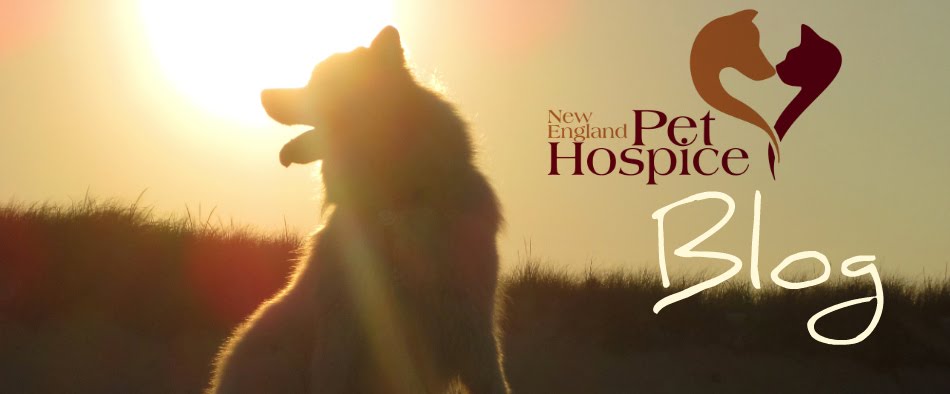By Rev. Eliza Blanchard
Interfaith Spiritual Advisor
 Why do final goodbyes hurt so much?
Why do final goodbyes hurt so much?
It is tempting to avoid them, sneak out the back way. Goodbyes mean that an end to what we cherished is real. We fear what others will think if we make “such a fuss” over a pet. We are afraid we’ll give way to our deepest grief. We’ve never lost one so dear, so how does this work?
There are lots of reasons why we just don’t want to think about the end.
As a minister, I’ve worked with many grieving people as they struggle to create a farewell for loved ones. With some guidance most people find the experience hard but helpful. At New England Pet Hospice and Home Care, I’ve also helped folks at the end of life or with funerals and memorials for their beloved animal companions. They too find the experience enriching, especially as they recall their favorite moments with their friends, and realize that their love is not gone, that it endures always.In my experience making the most complete goodbye helps.
Why? Because goodbyes are a way to honor the dead, to hold our feelings about our beloved, and to celebrate the gift that relationship is. In saying goodbye, we give meaning to mortality, and we gain wisdom about the meaning of life.
Fully saying good-bye creates meaning
Because it gives a shape to a heart-breaking welter of emotions. For many, creating a complete good-bye is like telling a satisfying story: what I’m calling a “complete goodbye” includes a beginning (how we got here), a middle (what the journey’s been like, and what have been the highlights), and an end (what this precious life meant and why this being will be missed). This may feel formal, and that’s exactly right - a form gives shape to our sorrow and our loss. And a shape helps us hold onto what’s valuable about having those feelings. Honoring the relationship and being thankful for the positive things may even help resolve the mixed feelings, which can include guilt or failure, some mourners have.Whatever tradition you come from or love can be a source for readings, blessings, music, and rituals you might include; it depends on how formal a farewell you want. Most importantly, your own words, tears, and stories are the most important elements of a goodbye to one you love.
Resources:
- Douglas, Barbara Rosenfeld. Gently Into the Night: A Guide to Creating Your Pet’s Memorial Service. www.heartsoulpet.com, 2012
- Kowalski, Gary. Goodbye, Friend: Healing Wisdom for Anyone Who Has Ever Lost a Pet. Stillpoint Publishing: Walpole, New Hampshire. 1997.Greene,
- Lorri A, and Jacquelyn Landis. Saying Good-bye to the Pet You Love. New Harbinger Publications, Inc.:Oakland, CA. 2002.
WANT TO USE THIS ARTICLE IN YOUR EZINE OR WEB SITE? You can, as long as you include this complete blurb with it: “New England Pet Hospice & Home Care supports those caring for ill, elderly and special needs animals at home following the human hospice and palliative care models of interdisciplinary care. Learn more and get your FREE subscription to Wag & Purr: Your Guide to Comfort Care for Pets at www.NewEnglandPetHospice.com"

